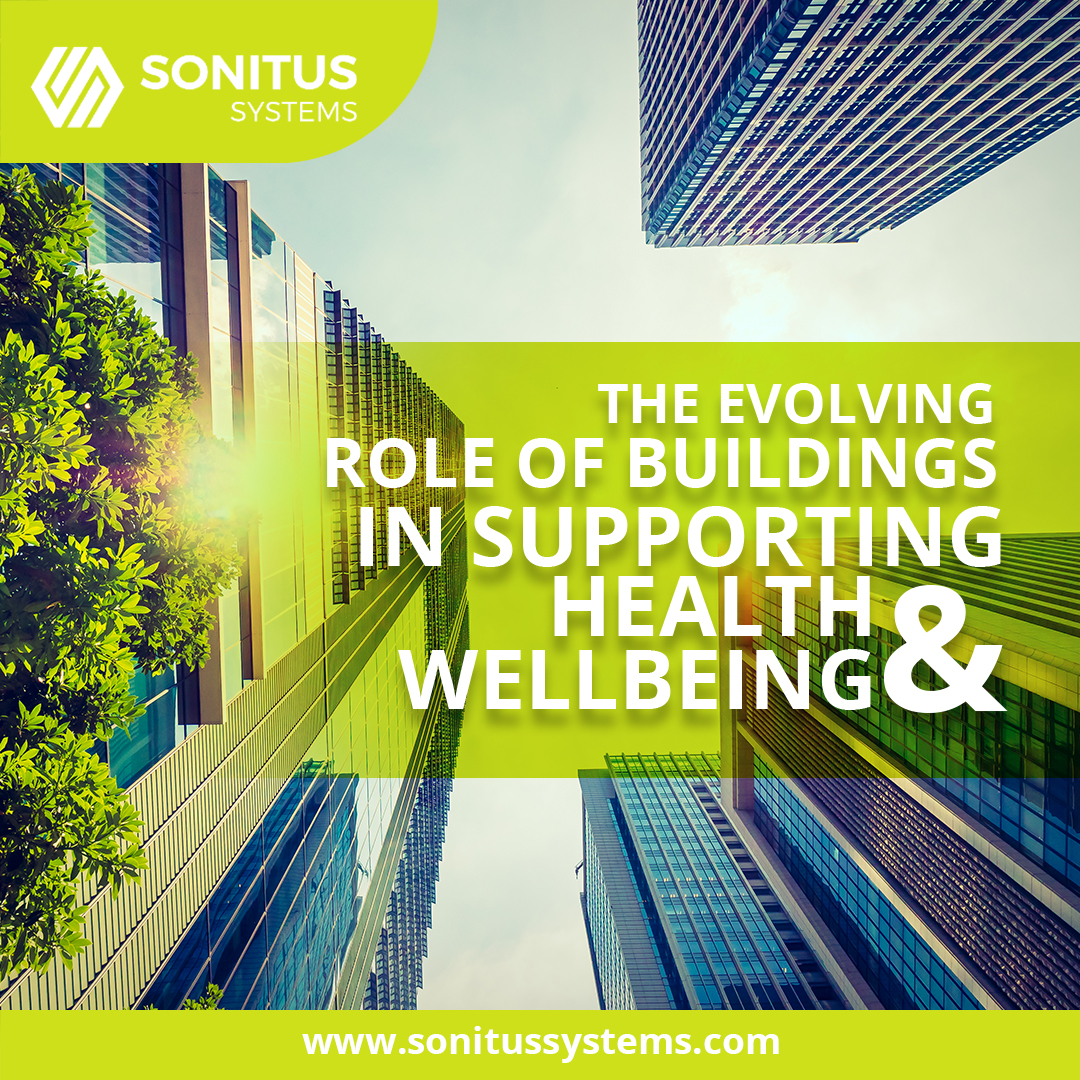How can sensor technology be integrated into building designs to help promote the comfort and wellbeing of the people that use them?
The WorldGBC is a global network of Green Building Councils that are leading the transformation of the built environment to make it healthier and more sustainable.
Under the WorldGBC Health and Wellbeing Framework, the six principles for a healthy, sustainable built environment across the entire lifecycle of the building are: to protect health, to prioritise comfort,
to design in harmony with nature, to facilitate health behaviour, to create social value, and to take climate action.
The principle to protect and improve health includes a focus on air quality, water quality, mental health and infectious disease. Similarly, the principle to prioritise comfort for
building users focuses on thermal comfort, lighting, acoustics, visual, ergonomic, and inclusive design. Building owners and operators will likely be aware that many of these individually
categorised issues are actually interconnected.
There has been a growing awareness over the past decade around the importance of designing with positive mental health in mind. As UK Space as a Service guru Antony Slumbers noted,
commercial tenants do not want an office, they want a happy and productive workforce and the office is simply a means to achieve this – or at least prior to the pandemic it was.
While there was much lamenting ‘The Office is Dead’ in the early days of our collective work from home experiment, it is fast becoming clear that the office or workplace provides so
much more than simply the place to park our PCs. However, with so many people realising that much of their role can be conducted from anywhere, workplaces will need to be better.
As building owners and occupiers work on attracting their teams back into the office and as they prepare for another phased return over the coming months, there will need to be clear
communication about new safety initiatives undertaken and new comfort features available.
The WorldGBC Health and Wellbeing Framework is a great starting point. Other worthy industry standards, including WELL building standards, are beginning to revolutionise the way employers
think about their buildings. Undoubtedly, Covid-19 has accelerated the pace of adoption of these standards, which demonstrate how design, behaviour and operation within the places we work,
live and sleep can profoundly impact upon our mental health and wellbeing, in both positive and negative ways. This is a welcome development for the industry given that the average
person will spend up to 90% of time indoors. This indoor lifestyle can have lasting effects on the body and mind. WELL Building Standards introduced a performance-based system that certifies
the various features of a building that improves the environment around us and has a positive impact on human health. Key factors to a WELL building include the right amount of natural light and
excellent air quality, as poor air quality can trigger many underlying health concerns such as asthma, allergies and various respiratory issues, not to mention the critical role it plays in preventing
the spread of infectious diseases.
Of course, interior design trends change. Over the decade, workplace trends have veered towards the anti-office aesthetic, with more activity-based, open-plan space and zones designated by colour or furnishings rather than by partitions. This was driven by an increased appreciation of collaboration and its role in facilitating team creativity and innovation. In more recent times, the effectiveness of this approach has been questioned, however, one thing that is no longer in question is the negative impact such open spaces have on noise levels. In fact, The Economist recently reported that “Noise levels in the office may be the main cause of workplace misery”, which highlights the need for urgency when it comes to acting on the principles for a healthy, sustainable workplace, as set out under the framework and international standards referenced above.
Critically, noisy workplaces not only distract and weaken the productivity of team members, they threaten the comfort, health and wellbeing of every occupant. The team at Sonitus Systems are well placed to advise on the grounding principles of effective workplace acoustics and to provide monitoring solutions and access to real-time information for building users.
Sonitus Systems offers both the hardware and software for a range of environmental parameters on a continual basis, with real-time information available through our Sonitus Cloud dashboard.
For more details on our indoor and outdoor noise and air quality monitoring products and services, please contact the team at www.sonitussystems.com/contact/contact.html
